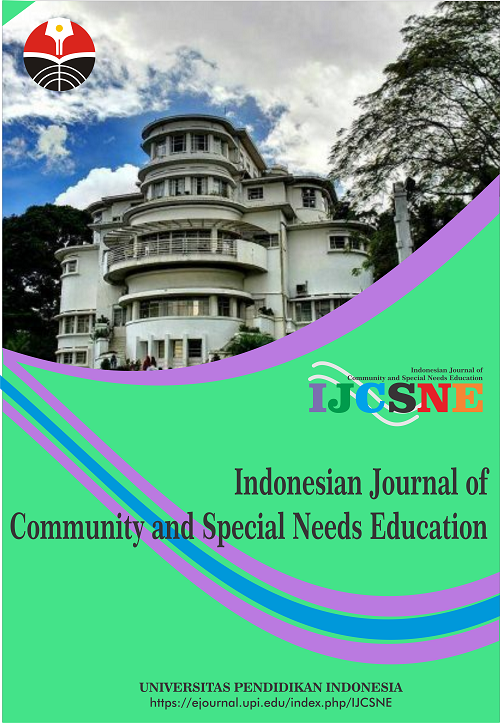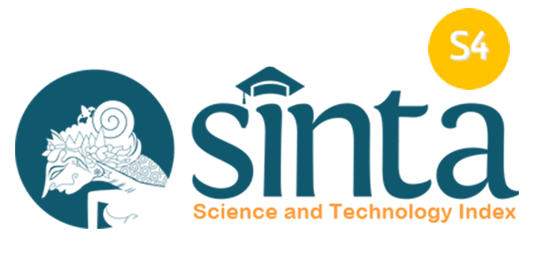Introducing Music and Movement-Based Self-Therapy for Children with Cerebral Palsy During the Covid-19 Pandemic
Abstract
Keywords
Full Text:
PDFReferences
Alhakiki, A., and Desyandri, D. (2019). Peran seni musik bagi anak berkebutuhan khusus di sekolah dasar. Edukatif : Jurnal Ilmu Pendidikan, 1(3), 210–214.
Anindita, A. R., and Apsari, N. C. (2019). Pelaksanaan support group pada orangtua anak dengan cerebral palsy. Focus: Jurnal Pekerjaan Sosial, 2(2), 208-218.
Apriani, F. D. (2018). Deteksi dini cerebral palsy pada bayi sebagai upaya pencegahan keterlambatan dalam diagnosis. Jurnal Gema Kesehatan, 10(2), 70-76.
Hermawan, B. D. (2013). Terapi musik perkusi untuk melatih motorik anak cerebral palsy. Jurnal Seni Musik, 2(2), 3-4.
Hidahyani, A., and Sujarwanto, S. (2021). Finger painting sebagai teknik pengembangan motorik halus anak cerebral palsy di usia sekolah. Jurnal Pendidikan Khusus, 16(2), 2-3.
Ikasari, A., and Kristiana, I. F. (2018). Hubungan antara regulasi emosi dengan stres pengasuhan ibu yang memiliki anak cerebral palsy. Jurnal Empati, 6(4), 323-328.
Lestari, S., Yani, D. I., & Nurhidayah, I. (2018). Kebutuhan orang tua dengan anak disabilitas. Journal of Nursing Care, 1(1), 50-59.
Pradipta, R. F., and Andajani, S. J. (2017). Motion development program for parents of child with cerebral palsy. Jurnal Penelitian dan Pengembangan Pendidikan Luar Biasa, 4(2), 160-164.
Probowati, A., and Saing, J. H. (2019). Peran fisioterapi terhadap kemajuan motorik pada anak dengan cerebral palsy. majalah kedokteran nusantara: The Journal of Medical School, 52(4), 191-198.
Setiawan, A. T. (2012). Efektivitas media puzzle untuk meningkatkan kemampuan menyusun kalimat bagi cerebral palsy. Jurnal Penelitian Pendidikan Khusus, 1(3), 27-28.
Winarsih, M., Nasution, E. S., and Ori, D. (2020). Hubungan dukungan keluarga dengan penerimaan diri orang tua yang memiliki ABK di SLB Cahaya Pertiwi Kota Bekasi. IKRA-ITH HUMANIORA: Jurnal Sosial dan Humaniora, 4(2), 73-82.
DOI: https://doi.org/10.17509/ijcsne.v3i1.39671
Refbacks
- There are currently no refbacks.
Copyright (c) 1970 Universitas Pendidikan Indonesia

This work is licensed under a Creative Commons Attribution-ShareAlike 4.0 International License.















